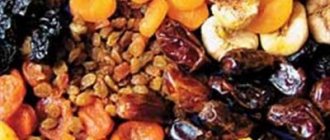Rose hips, like garden roses, belong to the Rosaceae family, but this plant is not so valued for the beauty of its flowers. The fruits of the thorny bush are record holders for the content of ascorbic acid (50 times more than in lemon!), which makes them a valuable product for traditional medicine. The plant grows in many climatic zones, so almost anyone can prepare it. And we will talk in detail about how to dry rose hips (fruits) for the winter at home in this article.
Fruit selection
Rose hips are harvested in late summer and autumn, from August to October, when the fruits acquire their characteristic bright (orange or red) color. Berries that are overripe on the bushes turn brown, sometimes almost black, which indicates that they have spoiled and are not suitable for drying.
Picked on the threshold of winter, the fruits of wild roses become sweeter, since under the influence of light frosts the starch they contain turns into sugar, but at the same time they can acquire an unpleasant taste if they are completely frozen and then thawed and softened. For collection, you need to choose dry, warm weather; it is also important that there is no rain a few days before the work.
It is not recommended to collect rose hips growing near large industrial enterprises or highways , as they may be contaminated with chemical emissions into the atmosphere or car exhaust fumes. If you are not sure that the plants are clean from harmful impurities, then it is best to purchase ready-made dried fruits at the pharmacy, instead of picking the berries yourself.
Important! The fruits of thorny bushes are collected with gloves on to protect hands from sharp thorns.
How and when to collect rose hips
Rose hips ripen from late summer to autumn. The ripening time is affected by weather conditions. Many believe that the greatest amount of vitamins is contained in berries collected after frost.
In central Russia, the plant is harvested as early as September.
When picking, you should choose ripe, unripe berries. They are identified by their bright orange or red skin color and characteristic hardness. Do not pick rotten or damaged berries.
Harvesting should be done in dry weather; the fruits are easily saturated with moisture and soften.
Along with the berries, some of the stalks and sepals are torn off. To achieve the maximum concentration of useful substances, after collection it is recommended to put the collected food in a cool place for a couple of days.
Preparing berries for drying
The harvested crop is washed well, laid out on paper or cloth in one layer and left in this position until all traces of moisture disappear. Next, using a knife, clean the junction with the petiole and the “nose” of each fruit from plant debris.
After this, the berries are ready for further dehydration work.
There is no need to remove the insides of wild rose fruits before drying if they will be used to prepare various drinks as tea leaves.
Features of drying rose hips in an electric dryer and in the fresh air
The procedure is further simplified if you have a special dryer at home - a dehydrator. The berries are also cleaned of debris, sorted, and sent to a functional device without wet processing. Drying can be carried out at a minimum temperature, then the process will take at least 9-12 hours. If you use the maximum parameters, drying will take no more than 6-8 hours, but there will be less benefit in such fruits. If the berries were dried correctly, they will break easily in your hands, but will not fall apart into crumbs.
We recommend: How to make homemade ice cream in 10 minutes? How about making it even tastier?
As a last resort, at home you can use the traditional drying option, which involves avoiding high temperatures:
- We sort the berries, slightly shorten the stalks.
- We lay the fruits on plywood, a large tray or newspaper in one layer and place them in a dry and dark place. The effect of ultraviolet radiation is detrimental to the beneficial components of rose hips. An additional important factor is good ventilation of the room.
- In such conditions, the berries will have to be kept for at least 2-4 weeks. Only then will they dry out evenly and be able to last the whole winter.
- When the fruits begin to break apart easily, transfer them to a cardboard box with a lid and keep there, without opening, for at least another 4-5 days. This way the berries will get rid of any remaining moisture.
All that remains is to send the workpiece for storage and you can enjoy the healthy product all winter.
How to dry rose hips
The work must take place as quickly as possible (in time) so that the fruits retain their entire supply of vitamins, therefore dehydration, under natural conditions and in the oven, requires constant air movement (draft or artificial airflow).
There are several options for drying rose hips at home:
- in a gas or electric oven;
- in an electric dryer;
- in the sun;
- in a convection oven;
- in the microwave.
We recommend that you find out the benefits of dried cranberries.
In the oven
Dried wild roses can be prepared in an electric or gas oven. To do this, it is necessary to maintain the correct temperature regime, during which the fruits are qualitatively dehydrated, but at the same time retain all the beneficial substances.
How to dry rose hips in the oven:
- The berries, washed and dried from moisture, are laid out on baking sheets in a layer not exceeding 2 cm.
- Trays with fruits are placed in a gas or electric oven set to +100°C for 10 minutes.
- Then the temperature is successively lowered every 10 minutes: for the first time - to +80°C, then - to +60°C and +50°C.
Fruits dried in this way will even contain an increased amount of vitamins, since the substances will concentrate after the water evaporates. As a result of cooking in the oven, about 50 g of dried fruits are obtained from 1 kg of fresh fruits.
They contain from 1000 to 2400–4000 mg of vitamin C. When dried in the traditional way, i.e. at a temperature of +50 to +90°C, they contain only 300 mg of this compound.
Properly prepared berries can be identified visually because they retain the color characteristic of fresh rose hips. Black or brown color indicates that dried fruits, in most cases, often do not even have traces of vitamin C.
Video: drying rose hips in the oven
In an electric dryer
Pre-prepared fruits are laid out in one layer on trays. The filled trays are placed in an electric dehydrator, after which the device is turned on and the temperature is set to +50°C, and the timer is programmed for 6–7 hours of operation.
After this, the person preparing the drying can get distracted and do other things. At the end of the cooking process, the dryer will beep to indicate that the final product is ready. The racks with fruits are removed from the kitchen device, after which they are left to cool completely.
In the sun
For the procedure, choose a sunny, windy day; in damp weather, the desired result will not be obtained. The berries are laid out on paper, cotton cloth or a lattice tray, and then exposed to the open sky to gradually evaporate moisture.
From time to time it is necessary to turn the fruits over to ensure even drying. In good weather conditions, dehydration occurs naturally within 5–7 days.
Video: collecting, drying and brewing rose hips
In a convection oven
To obtain drying using this electrical appliance, a fine mesh is additionally installed on its wide grill, after which the berries are laid out on top in one layer. To prevent the device from closing tightly and to create a gap between the lid and the base, a metal object is placed at their junction.
If this is not done, there will be no way out for the moist air, and instead of drying, the fruits will become covered with condensed moisture. Dehydration is carried out for 40 minutes at a temperature of +60°C, with the high-speed ventilation function constantly turned on.
At the end of the set time, the device emits a sound signal, after which you need to inspect the rosehip, and if there are doubts about its readiness, turn on the air fryer for another 15–20 minutes.
In the microwave
This is a quick option for dehydrating fruits. Peeled berries are laid out on a flat plate and placed in a microwave oven operating at low heat for 15 minutes. If the berries are still wet at the end of the operation of the device, repeat the procedure, but make sure that they do not dry out too much.
Also read how to dry blackcurrants.
How to prepare rose hips for drying
Preparing rose hips for drying is very simple:
- Sort the berries on a flat surface.
- Remove rotten, damaged, wrinkled fruits.
- If you have time and opportunity, you can cut the berries in half and remove the seeds. Then drying will go much faster.
- Place on a baking sheet or tray in one layer and place to dry.
On the eve of drying, just sort out the rose hips (no need to wash them)
Important! Preparations should begin immediately after collection. Picked fruits quickly deteriorate, so you should not postpone the process until later.
Do I need to wash and clean rose hips before drying?
There is a common misconception that rose hips must be washed before drying. In fact, this is strictly forbidden, because excess moisture will remain on the berries, and it will be difficult to remove. Then drying will not work - the fruits will steam a little: such raw materials are not suitable for harvesting. There is also no need to peel the sepals from the berries, otherwise the surface will be damaged and begin to produce juice. This will not only interfere with drying, but will also lead to loss of nutrients.
Attention! If the fruits are very dirty (picked during rain), they will have to be washed under running water.
After this, they are dried in the open air or in a dry room for 2–3 hours. It is not advisable to dip it with a towel, since it can damage both the fruits and the sepals.
How to wilt rose hips
Drying and drying differ only in the consistency of the fabrics of the final product. When poured, dry fruits produce a ringing, rustling sound, while dried fruits produce a soft and dull sound. They are juicier and stretch slightly when broken.
To make them, you must follow these instructions:
- First of all, boil the syrup from 1 liter of water and 1 kg of sugar, after which the berries, peeled and seeded, are dipped into the sweet liquid and boiled for 5–10 minutes.
- The pan with the fruits is removed from the heat and taken to a cool place, where its contents will infuse for 24 hours.
- The fruits are removed from the syrup and laid out on a wire rack to drain the liquid, after which they are placed in the oven and dried at +40°C for 10–12 hours.
How to dry rose hips in the oven to preserve the maximum benefits of the product?
Dogwood berries: beneficial properties and contraindications
The easiest way to dry rose hips is in the oven, but only if you can control the temperature in the chamber. Harvesting berries for the winter consists of several stages:
- We sort through the fruits again, throwing away the bad ones or those that are too dry. At the same time, they will not be washed! It will already be perfectly processed at high temperatures. Well, you need to be afraid of poisoning.
- Place the fruits on a clean, dry baking sheet in one even layer. Preheat the oven to 45ºС, after which we place the rose hips. We leave the door slightly open so that the moisture evaporating from the berries does not accumulate in the chamber.
- We gradually increase the exposure temperature to the permissible maximum, shake the pan regularly, but try not to touch the berries with your hands or tools.
Drying rose hips in the oven lasts on average at least 7-8 hours. The finished product will not change its original color, but will wrinkle noticeably. If the fruits (all or some) have darkened, this indicates that the recommended temperature or exposure time has been exceeded. There is no need to throw away such blanks! Although they have lost some components, their benefits still remain.
Drying flowers, leaves and roots
Petals and leaves of wild roses are collected at the beginning of flowering (May-July), in dry weather, and dried in a warm, well-ventilated place, but not in the sun. You can use them to prepare tonics, rinses or infusions for cosmetic purposes, and tea.
It is better to dig up the underground part of the bush during the period when the plant is dormant; this is convenient to do in early November. It is advisable to choose roots whose diameter does not exceed 1–1.5 cm. After removal from the soil, they are cleaned of sand and soil, washed well and cut into thin rings 5–7 mm thick. Next, the raw material is dehydrated in the same way as other parts of the bush.
Storing dried rose hips
After preparation, it is advisable to keep the drying at room temperature in containers that absorb moisture well, such as cardboard boxes, for 3–4 days.
Next, the fruits are packaged in jars closed with a fabric lid or canvas bags, and stored in a dry, dark place, for example, in a kitchen cabinet or pantry. With appropriate temperature and light conditions, dried fruits do not lose their nutritional properties throughout the year.
Did you know? The oldest known wild rose bush is over 400 years old. The patriarch of the plant world is located in a church garden next to a cathedral in Germany, has a 13-meter stem height and a trunk thickness of 500 mm.
An oven to help with drying rose hips
Our grandparents dried rose hips only on a stove, which was previously covered with ordinary cloth. In our conditions, to get the same result, a regular gas stove with an oven is very suitable. When harvesting is completed, the rose hips must be sorted out and all debris with already rotten berries must be removed.
It is very important not to wash the berries after this.
Place all the dry berries on a baking sheet, try to distribute them evenly to each other. After this, heat the oven to about 40-45 degrees and put your baking sheet in there for seven hours.
All excess moisture should come out of the berries; to do this, keep the oven slightly open. If the temperature was correctly maintained, then the dried rosehip will not have a different color and will not wrinkle.
If the temperature was high, the berries begin to darken and acquire a slightly brownish tint. And decoctions and various infusions have enormous healing properties that will help you well in the future.
If you have dried your rosehip using this method, you do not need to bury and store it immediately. This is because there is still a drop of moisture in these berries that you will have to remove. You need to put all the fruits in some kind of box that has a tight lid and be sure to leave it there for a couple of days.
Afterwards, distribute the rose hips into jars or pre-prepared bags and store them, now they definitely won’t spoil, don’t be afraid.
Now you already know how to properly dry rose hips. With the above methods, you can easily prepare everything for the winter. And most importantly, do not be afraid of any diseases or flu.
Good luck to you!
Benefits and harms
The flowers and fruits of this plant are the most valuable raw materials used in herbal medicine, cosmetics and cooking. Valuable oil is produced from the seeds. Rosehip juice, decoction, infusion or tea are also used in home medicine.
Benefits and medicinal properties:
- The culture contains more than 130 compounds, which have a beneficial effect on the human body. The berries are especially rich in nutrients: vitamins C, A, B1, B2, E, K, folic acid, carotenoids, tannins, flavonoids, carbohydrates, organic acids and pectins.
- Flower petals also have valuable substances: essential oils, flavonoids, anthocyanins, tannins and mineral salts (potassium, magnesium, phosphorus, calcium, iron). Although drying, cooking and freezing the plant reduces the amount of vitamin C, even after these procedures it will be higher than in fresh citrus fruits and vegetables.
- In pharmaceuticals and herbal medicine, rosehip flowers and fruits are most often used , and only sometimes the roots. The crop is known as a general tonic due to its high vitamin C content. The plant is often used to prevent colds and flu as it helps strengthen the immune system, which in turn prevents respiratory infections. It is also used to treat diseases of the digestive system, liver and kidneys, due to its choleretic, antispasmodic, antidiarrheal and diuretic effects. Berries support fat metabolism, which prevents excess weight gain.
- Wild rose supports the circulatory system and helps prevent hypertension and heart disease. The substances present in the plant strengthen connective tissue, dilate and seal blood vessels, and also prevent the absorption of harmful cholesterol. Flavonoids have strong antioxidant properties - together with vitamins C and E, they fight free radicals, slow down the aging process, and have anti-inflammatory and antiallergic effects.
The shrub is an excellent cure for skin diseases, for example, it suppresses the growth of melanoma. In addition, it helps with osteoarthritis, scurvy, rheumatism and cystic fibrosis. Rose oil has relaxing, calming, antidepressant effects and relieves fatigue.
Did you know? Rose hips contain an average of 300
–
1000 mg of vitamin C (per 100 g of fruit), which exceeds its content in fruits such as black currants and apples.
By eating 1–3 berries
of this crop daily, an adult will satisfy the daily requirement for this substance.
Contraindications
Drinking no more than 2 glasses of wild rose leaf or fruit tea every day will help the body get the required dose of vitamins, minerals and will not cause any side effects. But do not forget that medicinal plants can easily cause allergies.
- Possible contraindications:
- If a person has a tendency to bulimia, allergies, or is susceptible to nervous diseases, then it is better to completely stop taking rose hips.
- With prolonged use or consumption in large quantities, abdominal pain and nausea may occur.
- Women who are pregnant or breastfeeding should consult their healthcare professional about dosages and methods of using this product.
How is it not recommended to dry raw materials?
Rose hips should not be placed in the sun. Ultraviolet light will destroy many valuable substances in rose hips, primarily vitamin C.
It is also highly recommended not to use a microwave oven for home drying. Under the influence of powerful microwave radiation, only the peel of the fruit will dry, and the middle will remain raw or not completely dried. Therefore, the raw materials will be subject to the process of rotting. Unfortunately, it is impossible to adjust the power of the device so that the berries are dried evenly throughout the entire thickness.
It is also prohibited to dry berries at high temperatures (over 100 degrees) in ovens or electric drying cabinets. This will lead to the destruction of vitamins and microelements and burning of the product.
How to brew
Tea made from wild rose leaves is a good remedy for hemorrhoids, diarrhea and stomach cramps. If the fruits of this crop are mixed with other plants, you can obtain unique herbal remedies for the treatment of various diseases.
Recipes for healing with rose hips at home:
- For the treatment of dry cough - 1 tbsp. l. finely chopped wild rose fruits are mixed with 1 tbsp. boiling water, then leave covered for 20 minutes. The finished drink is filtered, after which 1 tbsp is added to it. l. acacia honey. Drink this tea 3 times a day before meals. If the patient suffers from weakness or fever, the infusion can be drunk more often, but it is important to remember that it must be brewed anew each time and drunk only fresh, otherwise all the beneficial properties will disappear.
- To strengthen the body , take 3 tbsp. l. chopped berries and pour 1 liter of cold water, then leave for 2-3 days. Next, the liquid mixture is kept in the oven for 30 minutes at a temperature of +60°C and allowed to cool. Then mix the medicine with milk in a 1:1 ratio, add honey to taste and drink it daily before bed, at night. This tea strengthens the body well and will be very useful for older people.
- To strengthen the immune system , add about 250 g of chopped rose hips and 250 g of granulated sugar to 1 liter of good cognac and leave for 10 days in a dark place. Then the drink is filtered from plant residues and placed in the refrigerator. It is recommended to take 50 ml once a day before meals.
- For depression and weakness - 2 tbsp. l. chopped fruits are poured into 150 ml of hot water and left for 30 minutes, then filtered, mixed with honey and consumed before each meal. This decoction will help a person to cheer up better than coffee and will lift the morning mood.
Important! When preparing rosehip decoction, it is not recommended to use aluminum utensils, since the metal from which it is made can react with the acid in the berries, which leads to the drink acquiring a “metallic” taste.
Methods for drying rose hips for the winter
It is best to dry rose hips naturally, that is, without an oven. This method is quite long, but the most useful, it allows you to preserve all the vitamins. If this is not possible, you can use electrical appliances: a special fruit dryer or a convection oven. The method of drying rose hips in the oven is very popular, but when using it it is difficult to maintain temperature conditions. But there is a higher probability of destroying the larvae of insect pests that may be hiding in raw berries.
Natural way to dry at home
This method can be used when it is possible to organize a dry, shaded place in a ventilated room for a long period. At home, the procedure for drying rose hips can take about 2 weeks.
Here's what to do:
- Carefully sort the collected raw materials, remove low-quality specimens, and, if necessary, wash and dry on a towel. If possible, it is better not to wash the rose hips, but only to clean them of plant debris and twigs, and lightly trim the long stalks.
- Spread paper or natural fabric on the prepared surface. Scatter the fruits in one layer so that they do not touch each other.
- Every 2 - 3 check the condition of the berries, mix and turn them so that drying proceeds evenly.
- To speed up the process, you can install a fan in the room and direct it at the rose hips.
- Signs of successful completion of the process are that the berries darken and slightly decrease in size. They become hard, the surface of the peel wrinkles, and their weight decreases. When broken, there is no wet pulp inside, only seeds and dry residue.
- The finished raw materials are packaged in prepared containers. Cardboard or wood boxes, plastic containers, glass jars, and canvas bags are suitable.
How to dry rose hips in the oven at home
This method is often used by housewives in apartments. Drying rose hips in the oven is a fairly quick way, and you can also save some space for drying the fruit. At the same time, additional disinfection of rose hips occurs from possible pests and diseases that could damage the berries during long-term storage.
Here is the sequence of actions:
- Before drying rose hips in the oven, the raw materials are sorted and cleaned of debris. The tails are trimmed, not necessarily short. You can leave them up to 2 cm long. If necessary, the raw materials are washed with running water and then dried with a towel.
- Scatter the fruits in one layer onto baking sheets lined with baking paper. It is advisable to make sure that they do not touch each other.
- The oven is heated to a temperature of 60 - 65°C. Place baking trays with plant material in it. The oven door is left slightly ajar. This will provide ventilation and help control the temperature so the berries don't bake. You can also use an electric oven.
- Drying time can range from 4 to 10 hours. It all depends on the initial state of the raw materials, as well as the conditions in the room. Every half hour you should check the condition of the rosehip and stir it. If there are several baking sheets, you must change their places inside the oven.
- After drying is complete, you can leave the berries inside the oven turned off for a few more hours so that they are completely finished.
- The finished fruits are darker in color, have a firm surface and are lighter in weight. When broken, there is no moisture inside, and nothing sticks to your fingers. This product must be distributed into prepared containers.
- Oven-dried rose hips are well suited for packaging in airtight containers, because after additional disinfection the likelihood of pest damage to the stock is minimal.
How to dry rose hips in an electric dryer at home
You can also dry rose hips in an electric dryer. This special household appliance for drying vegetables and fruits is ideal for preparations. The dryer is equipped with a heating element and a fan, as well as a temperature controller. Its mesh trays do not need to be covered with anything; fruits can be placed directly on them. The principles of drying in an air fryer are similar, but this device does not have convenient ventilated trays, and you will have to invent them yourself.
Using a dryer to harvest rose hips is very easy:
- The collected raw materials must be sorted, cleaned of plant debris, and, if necessary, washed and dried. Damaged and suspicious fruits must be removed.
- Spread the berries in a single layer onto mesh dryer trays. It is advisable to distribute them so that there are gaps between the fruits. During these intervals, hot air will pass through, and the drying process will go faster.
- Turn on the device, set the temperature from 40 to 60°C (optional). At low temperatures, more vitamin C will be retained in the fruits, and at high temperatures, the process will speed up and disinfection from diseases and pests will occur.
- The drying time of rose hips can vary from 4 to 8 hours, it all depends on the condition of the fruit, their size and humidity. The temperature and humidity in the room also have an impact.
- Every 40 - 60 minutes you need to check the condition of the product. If necessary, you will have to swap the pallets, rearranging the lower and upper floors. But if the raw materials are distributed freely and the air can move without obstruction, then this may not be necessary.
- After drying, the rose hips are distributed into prepared containers. Glass jars, canvas bags, paper bags or plastic containers will do. It is not recommended to store fruits in plastic bags.
Is it possible to eat rose hips?
This shrub is absolutely non-toxic, so all its parts, not only the fruits, but also the roots and flowers, are edible. They can be eaten both raw and after heat treatment.
With bones
Eating unpeeled fruits can cause severe irritation to the digestive tract , which means you need to make sure that the seeds and seeds are completely removed before using them in any recipe.
The berries, along with all their contents, can be used to prepare a decoction or infusion, as well as brewing tea, since in this case the plant materials do not enter the human stomach.
Seedless
The berries can be eaten raw, but before doing this it is necessary to remove the hard hairs (testes) that fill the inside of the rosehip and the seeds. They are peeled using the handle of a teaspoon or an English pin; only the outer shell of the fruit is suitable for eating.
Properly prepared dried rose hips can be stored for a year and will provide you with vitamins and minerals. In the winter season, these berries can be used to prepare healthy hot drinks that strengthen the immune system and improve human health.
Is it possible to freeze rose hips? How to store fresh rose hips
Fresh rose hips can be dried or frozen, but if you plan to use them quickly, in principle, rose hips can be stored fresh. But before we talk about storing healthy berries, we need to say a few words about how to choose them in the store.
How to choose rosehips in the store
Rose hips are harvested in September, it is at this time that the berries are fully ripened and accumulate all the nutrients.
Important! In overripe or unripe fruits, the amount of vitamins decreases sharply
When choosing berries in a store, you need to pay attention to their appearance. The fruit should not have rotten parts, be smooth and ripe
As for choosing already dried rose hips, you need to look for small and wrinkled berries. Of course, large dark red berries look more attractive, but they are given this spring-like appearance as a result of heat treatment - they are dried at high temperatures. Small, wrinkled berries are obtained by air drying, which allows you to preserve the maximum amount of vitamins.
Which container is suitable
It is better to choose a glass container for storage, but there is no need to seal it hermetically, just cover the jars with a plastic lid with a hole, or simply tie several layers of gauze around the neck of the jar.
It is no less convenient to store fruits in special fabric or paper bags, or in cardboard boxes with paraffin paper on the bottom.
Important! Rose hips are extremely susceptible to foreign odors, so you should not place loosely closed containers next to foods that have a rich aroma.
Terms and optimal storage conditions
Dry rose hips are stored in a dark, dry room for up to 2 years, the temperature should be about 0 °C. In an apartment for storage, you need to choose the coolest place where the rays of the sun do not penetrate.
Fresh rose hips cannot be stored for a long time - the berries will either dry out or rot. Therefore, it is better to freeze it. This way its beneficial properties will be fully preserved. For this purpose, it is better to pack the berries in portions, so as not to waste the entire volume of defrosting. How to properly freeze fresh rose hips will be discussed in detail further. The shelf life of fresh rose hips in the freezer is 1 year.
Cold storage
You can store fresh berries in the refrigerator for a short time, and they must be placed in a glass container with a tight-fitting lid, otherwise the rose hips will absorb the odors of other products. The maximum shelf life of fresh berries in the refrigerator is a week; then the rose hips should either be used, dried, or frozen.











